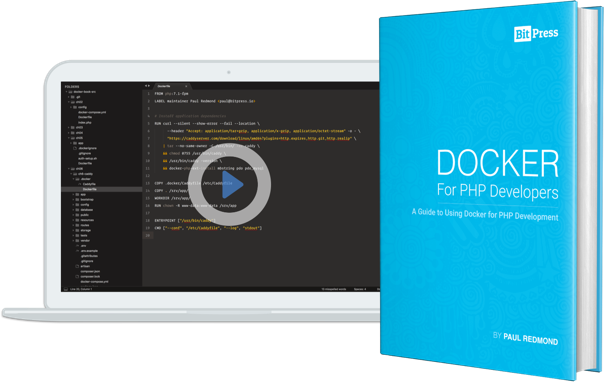How to use Caddy with PHP and Docker
Caddy is an excellent HTTP/2 web server with automatic HTTPS. The configuration is simple and approachable, providing secure defaults and self-contained binaries that run on every platform.
I have found Caddy to be my go-to server for running PHP Docker containers in production. Using the official PHP-FPM image, we can run Caddy and start PHP-FPM in the background within the same container.
I find that running PHP-FPM and Caddy together simplifies my stack by eliminating the need for FastCGI network communication between something like Nginx and PHP-FPM.
Setting up a Project
Using Laravel, here’s how I like to organize my Docker setup:
$ cd ~/Code/
$ laravel new docker-caddy
$ mkdir docker/
$ touch docker/Caddyfile
$ touch docker/Dockerfile
$ touch docker-compose.yml
I like to create a docker/ folder to contain my Docker-specific code, and sometimes I even break it out into subfolders like docker/php/ depending on the needs of my project. In this case a docker-compose.yml file to orchestrate containers in development, a Dockerfile to build the image, and a Caddyfile to configure the web server.
The Caddyfile
The Caddyfile is a text file that configures how Caddy runs. The syntax is clean and simple, often requiring a one-liner to enable features with practical conventions.
Here’s a typical Caddyfile for a Laravel project:
In production I usually terminate SSL in the cloud provider I am using, and Caddy runs on either its default port of 2015 or 80. In the Caddyfile above, this server will respond to 0.0.0.0:2015 because no port was specified.
The gzip directive is a simple one-liner for enabling gzip with reasonable defaults. You can get more granular control if needed.
We use the fastcgi directive to proxy to respond on the / request path. The php on the end of the directive defines some presets for the directive:
ext .php
split .php
index index.php
The rewrite directive is rewriting all URLs to point to an index.php file, which is our public/index.php file for Laravel.
The last chunk of code sends all logs to stdout which is what we want in Docker, and the server logs will show up in the console.
Last, the on startup event starts PHP-FPM in the background so that Caddy can communicate with PHP.
If you haven’t used Caddy, an excellent place to start is the Caddyfile tutorial which does an excellent job walking you through how to configure Caddy.
The Dockerfile
Here is the full Dockerfile located at docker/Dockerfile in the project:
The Dockerfile is extended from the official PHP-FPM image, and then we install the Caddy binary from the official build server with the personal license. We make the caddy bin executable and install a few PHP extensions.
Next, we copy the source code and Caddyfile and make sure that the www-data user owns the application files in /srv/app.
The last line provides defaults for an executing container, which will be running caddy with the /etc/Caddyfile configuration, and logging output to stdout.
Note that we are installing a few plugins http.expires,http.realip, and using license=personal. If you are using Caddy for a commercial project, you will need a license or build Caddy from source yourself.
Try it Out
Let’s run our Caddy and PHP-FPM image using Docker Compose! Here’s what a simple docker-compose.yml file would look like:
We can build the image and run it with one command:
$ docker-compose up --build
Now if you visit http://localhost:8080 you will see the Laravel welcome page and Caddy logs in the console!
Learning More
I like using Caddy because we can combine running PHP-FPM and the web server in the same container. Combining both in one container removes the need for networking between the web server and PHP-FPM. There’s nothing wrong with either approach, but I prefer less moving parts.
I recommend learning more about Caddy by reading through the guide, specifically the Caddyfile tutorial.
Caddy is open-source, but if you want to use the build server like we’re doing in the Dockerfile for a commercial purpose, you will need an official license. You can also build Caddy yourself, but the plugin build system is full of useful plugins and will save you a ton of time.
